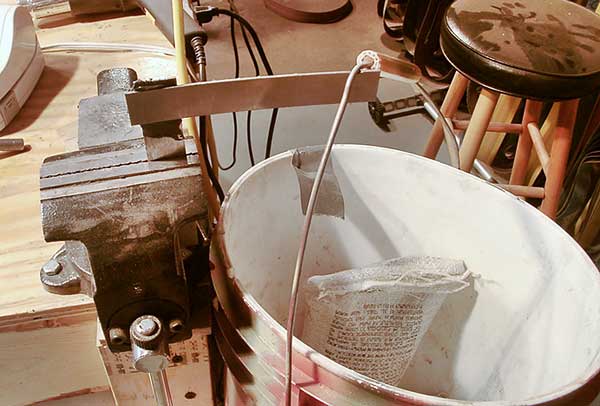Originally posted by RussFairfield
I think we worry too much about finding the ultimate permanent glue. We really need only sufficient glue bond to hold the wood on the tubes while we are turning and finishing them. Once the pen is assembled, the wood is captured between the metal fittings, and there is no need for any glue at all, except to act as a filler to keep the wood concentric with the tubes. The only exception is a closed-end pen where there is a fitting pressed into a brass tube on only one end.
We can get away with less of a glue bond for turning if we trim the ends of the blanks just shy of the end of the brass tubes so the bushings compress on the wood rather than the brass. We all to often trim until we see bright brass; and that makes the bushings compress against the tube, and not the wood. This tight fit between bushing and wood will also keep the CA glue out of the joint.
The heaviest turning load on the wood and glue is while turning the blanks from square to round. Turning the wood to round between centers before drilling will remove this intermittent load and reduce the stress on the glue joint while we are turning the pen on the mandrel. It will also reduce the amount we have to tighten the nut on the end of the mandrel.
I agree mostly with what you're saying, unfortunately, if a novice were to read that advice, it could be dangerous, or at the least, extremely frustrating. Many woods need a lot more than just a dab of glue, even if they are dried and handled properly. Leaving the wood long can force it to swell when tightening the nut on the mandrel, or pressing the parts into place.
There are many woods that I use that have disintegrated/cracked due to lack of consistent gluing. I know many new turners will be experimenting with fence boards, chair spindles, firewood, etc., many of which are not true hardwoods and will need a solid glue bond to avoid a bad situation at some point. Many people will only be using wax/shellac based finished with no real holding power, so the only durability they're going to get is from the glue that they use on the tubes.
When I'm gluing, my main concern is holding the blanks together long enough to survive the turning/assembly process. I usually only use CA, unless the wood is so dense that it won't absorb into the fiber, at which point I'll use epoxy or Gorilla glue. Ditto that for any acrylics.
When I do use CA, I rough the tubes, put several random squiggles of thick CA on them, and then run a little bit of thin around the hole in the blanks, letting it soak in to the fibers. When I join the two pieces together, the thick stuff on the tubes fills gaps, clings to the brass, and mingles with the thin that has found its way into the wood fibers. I've not had a blowout since, and I mostly work with pretty unstable woods.

